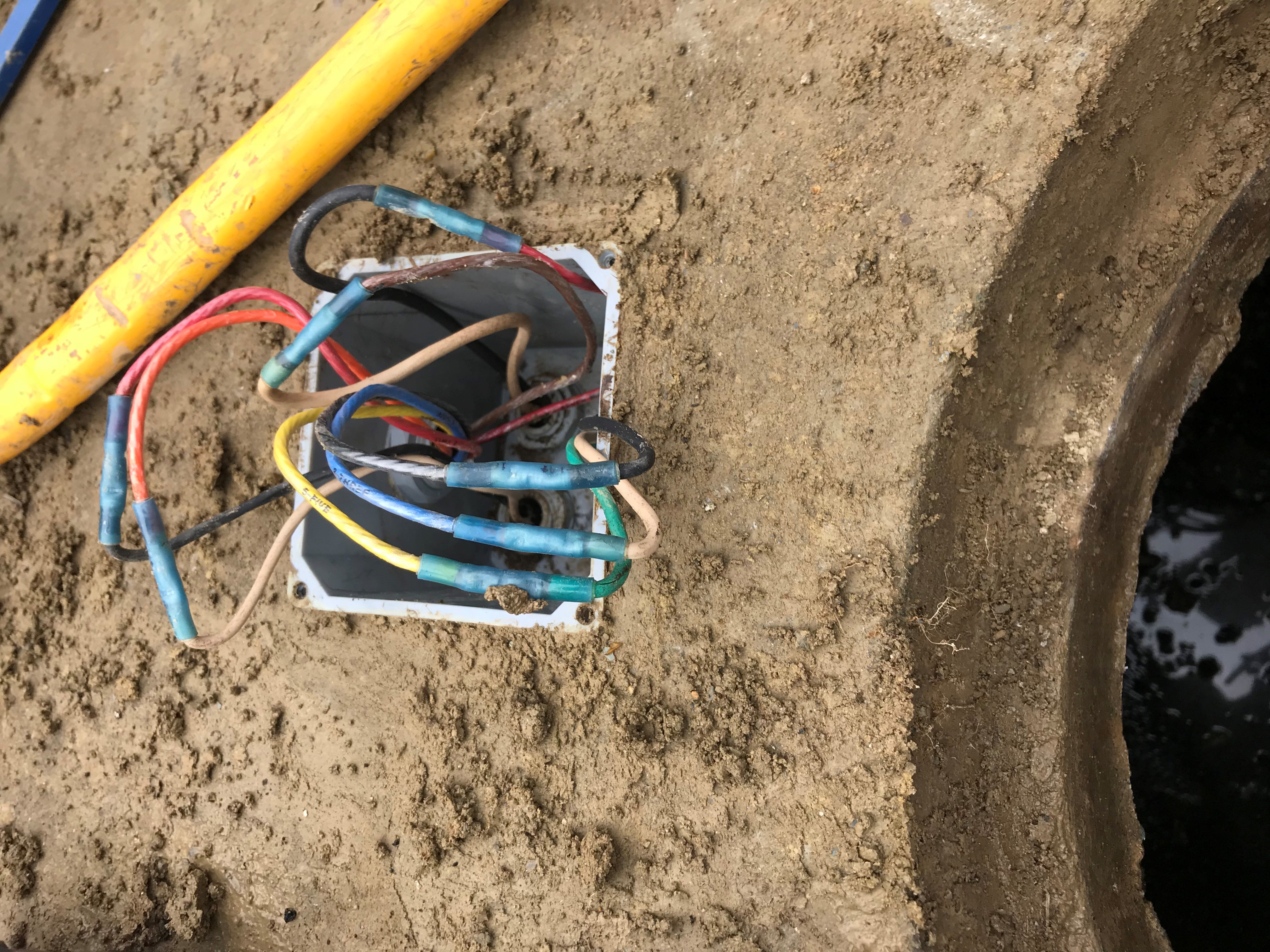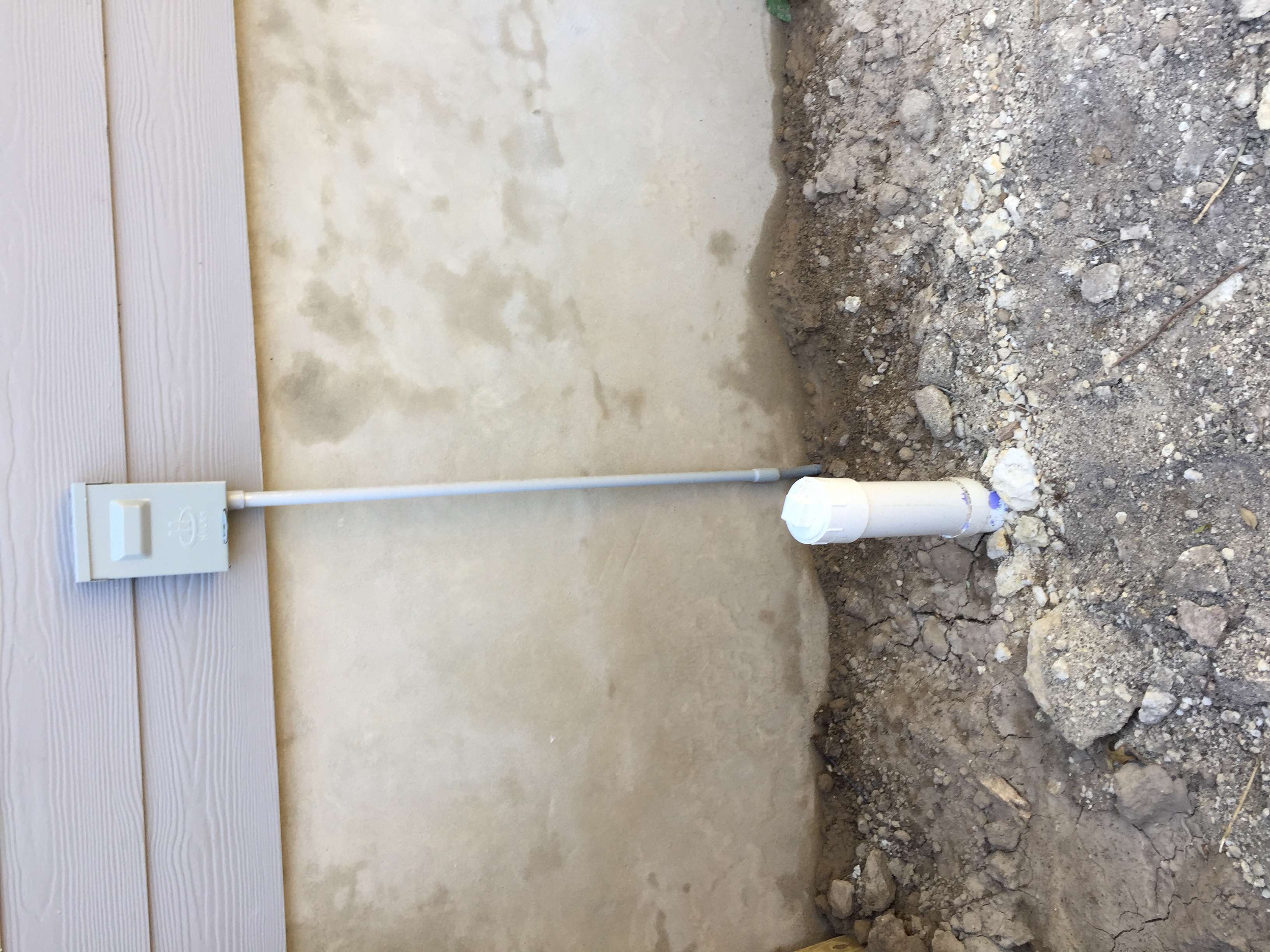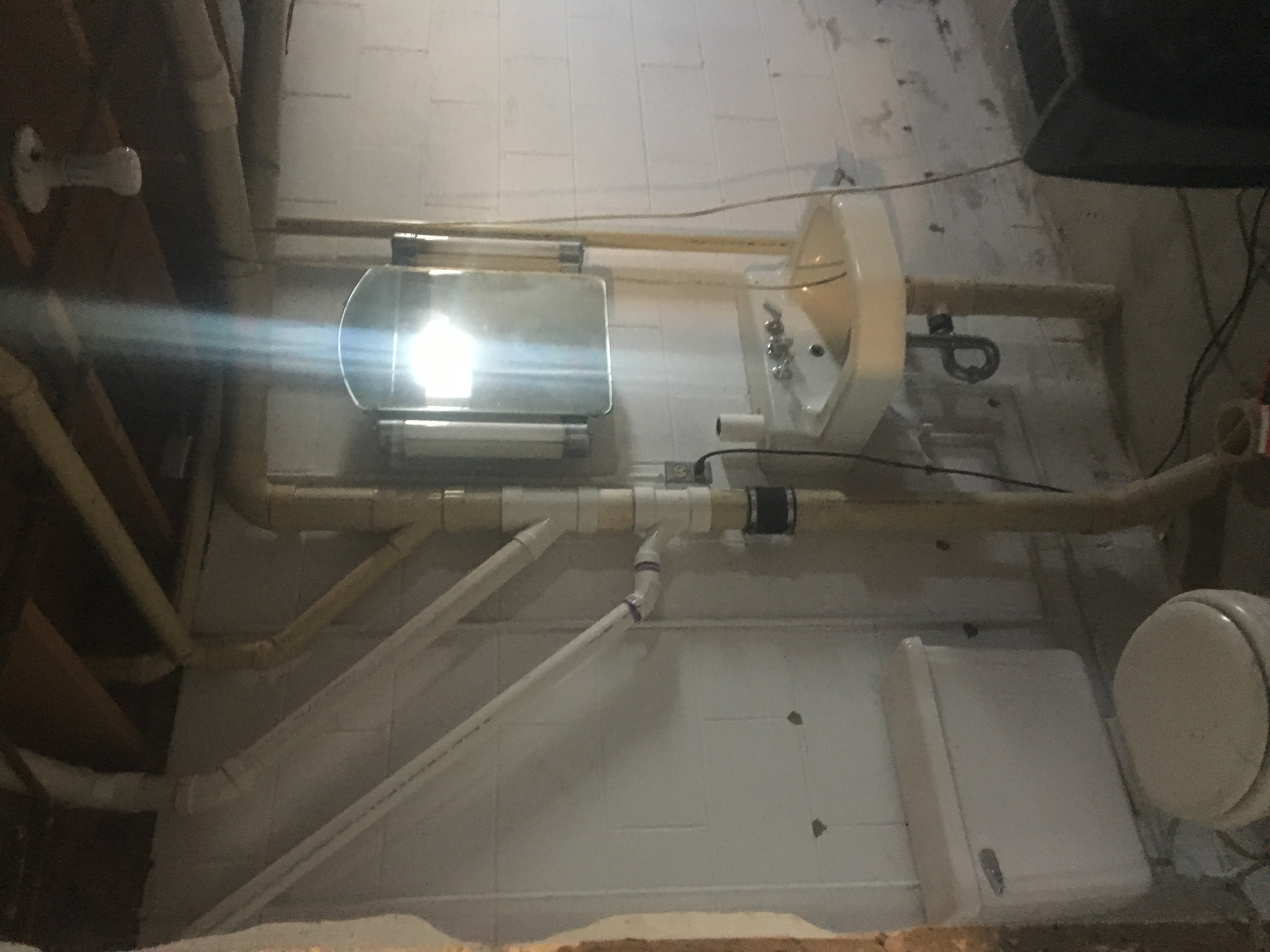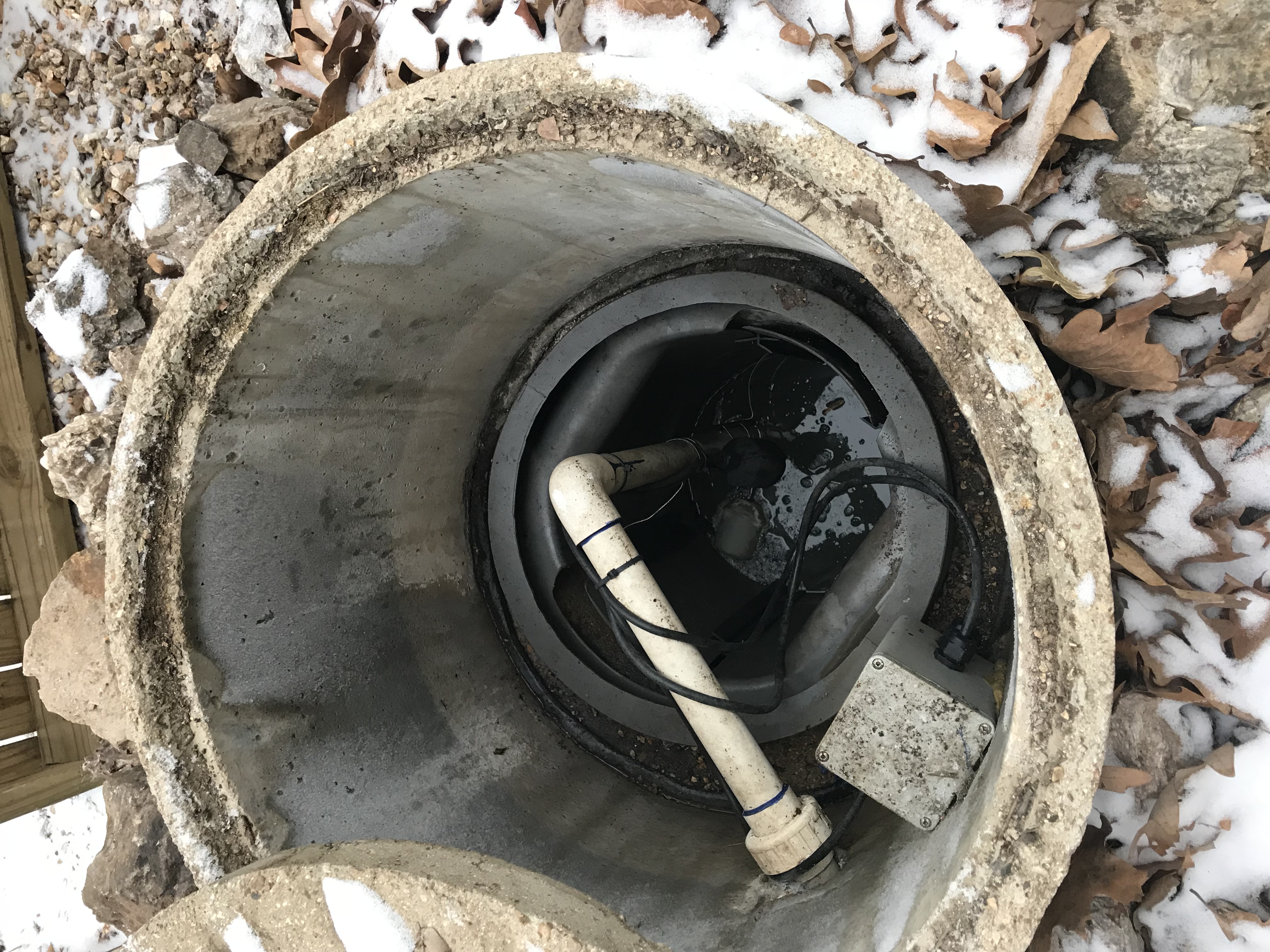Reviewed the Conventional Septic System Absorption Drainfield image and learned that this was a 2 leg systems that was spread out across the proper stone bed with proper set backs from foundation and property lines with 1/4 per foot min.
Attached is a picture of the electrical box for a pump station. The pump station was wired for a solid moving pump. The pump was used to pump solids as well as waste water to the septic tank. It was also wired to an alarm inside the pump station.
The picture from the gallery is a double chambered septic tank which is more efficient than a single chamber septic tank. I have learned that double chambered tank has three baffles and will work much better than a single chambered tank with only 2 baffles.
A clear concise report is critical to conveying inspection information to your client. Ensuring details and proper inspections are conducted will help to provide your client with the best information to make a logical decision. Labeling all inspection criteria with the “satisfactory, satisfactory with concerns, further investigation recommended, and unsatisfactory” describes each critical system to you client in a clear easy to understand manner.
In some cases a single GFCI receptacle can be used to protect a circuit branch. When this is completed the GFCI protected receptacle will always be the first receptacle in the branch or run. If the GFCI receptacle trips the remaining outlets downstream will lose power, this can effectively protect the branch.
I read “Graywater Inspection” because of the possible graywater systems may accompany septic systems. Graywater is waste water that does not contain sewage. All graywater systems should never be used as potable water. However, graywater can be used in systems such as toilets and irrigation systems. There are downsides to using graywater that includes odor, expensive and complicated equipment, and the possibility of contamination of water and plants. Using graywater is an excellent way to conserve water where water is scarce. However, it comes with a hefty price and many potential problems.
During this inspection, water was leaking out from under the septic tank lid. The septic pump did not function causing the water to backup in the tank and home. The alarm on the control box also did not sound. The septic system was reported as in need of repair.
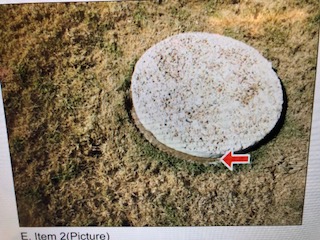
The septic systems are the responsibility of the home owner. The system should be pumped regularly. Signs of issues are backups, standing water at the drainage field and foul odors. High usage of water is not recommended. Call a septic company when issues are noted.
In the attached picture the absorption field of this septic system is compromised. Pooling liquid and/or unpleasant odor are good signs of septic failure. The septic system may have a blockage or current usage may have overloaded the system. Once the absorption field has dried and remaining effluent pumped, a hydrostatic test should be performed to identify the absorption rate and if it has changed since the failure.

Consumer responsibility for septic systems. Septic systems require more attention than those on public sewer systems. The homeowner should have their septic tank pump regularly, about every three years, or when scum and sludge quantities exceed recommended levels. The homeowner should also use water responsibly and fix leaks immediately. Only flush approved material down the commode. Finally, keep you absorption field clear of traffic and growing vegetation.
The picture is showing two things the location of the clean out that is going to the septic tank and the service disconnect for the aerobic system components. the system we a new install so no problems were seen other then dirt settling around the tank and other components.
The article I chose was titled Septic System Inspections it gas the basic function of the system and, when to inspect it. details were also given on how to locate a system including using as builds, probing, and looking for greener grass. They also talked about the steps in an inspection and what to wright up.
The image I chose is of the drain waste vent system, This photo shows where the system comes together from all of the fixtures in the home and terminates into the floor here it exits the home to the septic tank.
The photo I chose is of a leach bed. This photo shows the proper dimensions of the installation of the leach bed with perforated pipe and stone. It also shows the minimum clearance from ground water supply to avoid contamination.
Prior to inspection of the existing septic system, a visit to the local County Waste-Water Department produced a sketch of the property which showed a layout of the septic system, indicating locations of the Septic tank and Dosing tank. Additionally the owner indicated the system was recently pumped approximately 2 years prior. A photo (attached) was taken of the interior of the Dosing tank where both high-level and low-level float actuators were visible. Also visible in the photo is the electrical control box which houses the high-level water alarm. Based on visual observation, the low-level float is in a horizontal position of which reflects the tank is near the event of the effluent pump initiation for distribution of clear water from the tank and into the laterals (aka Absorption Field).
I have a customer who called me with this question: my bath tub and toilet bubble when I was taking a shower, he wanted to know if there was a serious problem with the system, the tank was pumped prior to them moving in, about 6 months ago.
Commercial buildings:
One of the key components in performing an inspection of a building is the roof system. Basic factors involve verification of proper slope to drains, breaching/failure in corners along transition areas such as parapet walls and HVAC equipment roof curbing. These locations are prone to leakage. Additionally, look for areas of ponding water (staining) around equipment which can occur if saddles havent been installed correctly or provided at all.
Attached is a picture of a saturated leach field. Leach fields fail for several reasons. One, the ground may have a high percolation rate. If so the effluent cannot be absorbed at a high enough rate. Another reason for a failed leach field is the septic tank is overfull of sludge. If so the tank has a diminished capacity and therefore the waste water does not have enough time to be treated.
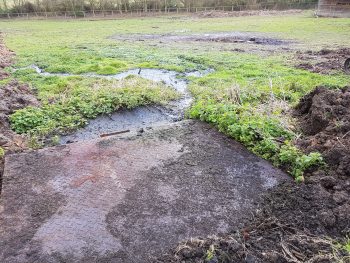
I studied the picture, “Sewer Backflow Valve”. This valve is used to prevent sewer water from backing up in to the house. The valve utilizes a flap on a hinge that allows sewer water to pass one direction but will close if the sewer water flows in the opposite direction.
I have a Clearstream 600NC3 Aerobic system installed for my home, which means it can service 600 Gallons Per Day. I inspected the scum level and the condition of the tank in the Clarification Area (or the outlet side of the tank). The concrete was in good condition and didn’t show any signs of deterioration. The scum level was about 10" below the “surge control weir” (or baffle) which well within acceptable limits before pumping out is required. If the scum was within 3" inches of outlet baffle it would be recommended to pump the aerobic septic tank.
